Teach your students what a poem is as well as all the important information necessary while teaching poetry, like: vocabulary, sound devices, types of poetry, figurative language, how to analyze a poem, and how to find rhyme scheme.
In this resource, you will receive a packet of graphic organizers/guided notes along with a Powerpoint lesson that teaches the following terminology:
VOCABULARY
poem, speaker, line, stanza, quatrain, couplet, cinquain, tercet, refrain, symbol, theme, mood
tone, imagery, juxtaposition, oxymoron, pun, paradox, allusion, proverb, foot, iamb, iambic pentameter, enjambment, anaphora, metonymy
FIGURATIVE LANGUAGE
simile, metaphor, personification, idiom, hyperbole, irony
SOUND DEVICES
rhyme, rhyme scheme, slant rhyme, rhythm, meter, alliteration, consonance, assonance, onomatopoeia, repetition
TYPES OF POETRY
narrative, lyrical, haiku, ballad, sonnet, limerick, free verse, acrostic, concrete, blank verse, blues poem, elegy, ode, prose, villanelle
HOW TO ANALYZE A POEM
HOW TO DETERMINE RHYME SCHEME
Students LOVE reading and analyzing Kobe Bryant’s “Dear Basketball” Poem. In this activity, they will complete a Poem Analysis & Compare/Contrast Paired Text Activity. The paired text students will look at is Michael Jordan’s 2003 Retirement Letter, also titled “Dear Basketball.”
In 2015, Bryant announced his retirement through “Player’s Tribune” in a poem titled “Dear Basketball.” In the poem, Bryant shares his love for the sport with the world. Bryant later earned an Academy Award for Best Animated Short Film for “Dear Basketball” in 2018.
Included in this lesson:
- Anticipation Guide
- “Dear Basketball” poem by Kobe Bryant, analysis and answer key
- Paired Text Excerpt of Michael Jordan’s letter: questions and answer key
- After Reading Poem — Creative Writing Activity
This lesson is a poem analysis of “Nothing Gold Can Stay” by Robert Frost. This is a perfect side activity for the novel The Outsiders by S. E. Hinton!
This activity also works on its own if you are looking just to teach about the poem itself. Your students don’t have to be reading The Outsiders.
In Chapter 5 of The Outsiders, Ponyboy recites the poem “Nothing Gold Can Stay.” This poem plays a major role in the novel as it represents the universal message to stay gold and stay pure. Have your students analyze the poem and build their comprehension; it will make analyzing the theme of the book much easier later on! The poem analysis will touch on important literary elements such as: rhyme scheme, tone, theme, metaphor, alliteration, allusion, imagery, and personification.
To enhance their learning and make the lesson more engaging, students will also study a poem with a similar theme. Students will listen to the Bob Dylan song, answer the questions, analyze the lyrics, and then compare and contrast the themes present in both texts.
In this Poem Analysis and TDA Essay (Text Dependent Analysis), students will first read and answer questions for the poem “Out Out—” by Robert Frost. Students will then write a TDA based on themes and figurative language in the poem.
In this lesson plan:
- Full Poem “Out Out—” by Robert Frost (1916)
- Poem Analysis Questions that concentrate on poetic devices (alliteration, allusion, theme, mood, tone, dialogue, connotation, rhyme scheme, juxtaposition) with ANSWER KEY
- TDA Text Dependent Analysis Prompt and worksheets for writing
- TDA Prewriting, planning, brainstorm Graphic Organizer for Students
- TDA Rubric and Grading guidelines based on: content, focus, organization, style, and conventions
Students will write their own original poems with this lesson and activity created for middle school students (6th, 7th, 8th, or 9th grade).
Make writing poetry fun for students by giving them choice! Students will first learn about five different types of poems. Then, they will choose 3 of the 5 poems they’d like to write. Students will write their rough drafts in a packet, and then finalize their work on blank pieces of paper which result in beautiful wall art for your room.
In this ELA resource, you will receive:
- Powerpoint presentation that includes examples and definitions of the following 5 types of poems: Haiku, Acrostic, Concrete, Limerick, and Free Verse
- Student packet that includes: directions, requirements, and examples of all 5 poems
- An example final draft of a limerick with colored illustration
Teach your students all about Blackout Poetry with this fun lesson and activity!
In this resource, you will receive:
- Teacher Guide
- Powerpoint lesson on Blackout Poetry with step by step directions for students to create their own blackout poems in a variety of ways
- 10 Examples of blackout poems
- 40 Pages of printable texts your students can use to make their own poetry
- Editable word document Rubric and Prompt for students
This Poetry Packet includes 5 Poems your students will read and analyze. The poems included are suggested for a Middle School Poetry Unit: 7th, 8th or 9th Grade ELA.
This packet is a wonderful tool because you can have students complete the analyses of the poems in a variety of ways: whole-class, independently and/or collaboratively.
The poems included in this packet are:
- “The Road Not Taken” by Robert Frost
- “I Wandered Lonely as a Cloud” by William Wordsworth
- “We Wear The Mask” by Paul Laurence Dunbar
- “We Never Know How High We Are” by Emily Dickinson
- “The Gardener” by Robert Louis Stevenson
In this packet, students will work on poetry skills such as: rhyme scheme, rhyme, allusion, imagery, assonance, consonance, alliteration, hyperbole, theme, tone, mood, author’s purpose, personification, and connotation.
Your students are going to love this Poetry Digital Escape Room! Students will read and analyze the poem “Stopping by Woods on a Snowy Evening” by Robert Frost.
They will solve puzzles in this peaceful scene of snowy woods, glistening mountaintops, and a beautiful, serene frozen lake. In this 360° digital escape room, students will try to escape the woods before the sun goes down! This activity is designed to work for a laptop, tablet, or smart phone.
This game requires reading comprehension strategies, knowledge of poetic devices, and critical thinking skills. Watch the preview video and see exactly what’s inside the digital escape room!
Included in this download are teacher instructions, student instructions (digital), the master lock graphic organizer, answer keys, the full text of the poem, and a reflection sheet (optional).
PLEASE READ: While using this resource, you must have a wi-fi connection and the ability to access the following sites: Google Forms and Kuula.co. Please check that these websites are not blocked by your district’s filter before purchasing. Your students do not need to have a Google account.
Assign your students a one pager poetry analysis project and have your students share their understanding of ANY POEM by imaginatively blending their written ideas with colorful images from the text. You can pick one poem for your whole class to use or have all your students pick their own individual poems! Students’ artwork make for unique and creative analyses of the literature and also make great bulletin boards!
Included in this purchase is:
- Student directions for the one pager project
- Rubric for the one pager project
- Example one pager (based on the poem “Do Not Go Gentle Into That Good Night” by Dylan Thomas)
- 10 BLANK TEMPLATES (printable — optional)
- EDITABLE word document so teachers can modify instructions or rubric
Students are encouraged to include several of these literary devices, poetic devices (sound devices), and figurative language elements into their final projects: metaphor, simile, personification, hyperbole, imagery, pun, oxymoron, paradox, idiom, allusion, symbolism, assonance, consonance, alliteration, anaphora, rhyme, rhyme scheme, repetition, onomatopoeia, cacophony, mood, tone, and theme.
This resource includes a Poetry Assessment for upper middle school students (7th, 8th, or 9th grade ELA). You will receive a printable PDF copy as well as an EDITABLE word document in case you would like to make modifications. A detailed answer key is also included!
The format of this test includes:
- 8 fill-in-the-blank questions with a word bank
- 6 matching questions with poem types
- 5 matching questions with sound devices
- 5 matching questions with figurative language
- A poetry analysis of two poems: “There Will Come Soft Rains” by Sara Teasdale and “Nature” by Henry Wadsworth Longfellow
- Students will answer 5 multiple choice questions regarding each poem
- 1 constructed response where students will compare the themes of each poem in a fully developed paragraph
(35 questions in total)
The Poetry Test covers the following terms:
rhythm
mood
theme
poem
tone
allusion
imagery
rhyme
narrative poem
lyrical poem
haiku
acrostic poem
limerick
free verse
repetition
alliteration
assonance
consonance
onomatopoeia
personification
hyperbole
idiom
simile
metaphor
symbolism
Have your students create a collaborative poster and learn about Robert Frost in a fun and engaging way!
Your students will create an author biography by researching Robert Frost and establishing his profile on a poster.
Students will learn about Frost and his body of work as an influential author.
Additionally, they will learn the importance of collaboration and effective communication. This project is perfect for National Poetry Month.
Project Steps:
1) To construct the author study poster, your students will work in groups to conduct research on Robert Frost.
2) Students will then transfer their findings to boxes on the poster.
3) Next, they will work together to color or paint the pieces of the poster.
4) Lastly, students will tape together the final product.
The poster is made up of six pieces of paper, which can be printed on regular copy paper or card stock.
Once taped together, the final product will be 28″ x 15″ and can last a lifetime if you laminate it!
This resource includes the following:
- Step by Step Student Directions (PDF & editable word document)
- Author Study Project Rubric (PDF & editable word document)
- Author Study Graphic Organizer for Students (PDF & editable word document)
- 6 Blank Coloring Pages that come together as one beautiful poster (PDFs)
- Robert Frost Author Study Answer Key
- Example of Final Project: Completed Text & Fully Colored Body
Check out more from my LITERARY LEGENDS Collection:
This resource is a FULL POETRY UNIT for ELA grades: 7th, 8th, or 9th! You will get a collection of different lessons, activities, and projects, plus a TDA essay, digital escape room, and final test! I’ve also included an example schedule for teachers to follow day-by-day!
Included in this middle school poetry unit bundle:
- Introduction to Poetry Lesson & Guided Notes
- Kobe Bryant “Dear Basketball” Poem & Paired Text Michael Jordan Letter
- “Nothing Gold Can Stay” by Robert Frost Poem Analysis and Paired Song
- “Out Out” by Robert Frost Poem Analysis and TDA Essay
- Writing Poetry/Writing Workshop: Haiku, Concrete, Acrostic, Limerick, Free Verse
- Blackout Poetry Lesson and Project
- Poetry Packet — 5 Poems to Analyze
- Poetry Digital Escape Room — Robert Frost Poem Analysis & Comprehension Game “Stopping by Woods on a Snowy Evening”
- Poetry One-Pager Project and Poem Analysis for ANY POEM
- Editable Poetry Test/Assessment for 7th, 8th, or 9th Grade Poetry
- Robert Frost Author Study: Collaborative Poster Project
- Teacher guide with day by day schedule for 3 weeks of Poetry
- Robert Frost Author Study: Collaborative Poster Project
This bundle is so diverse and your students will get to analyze at least 12 different poems!
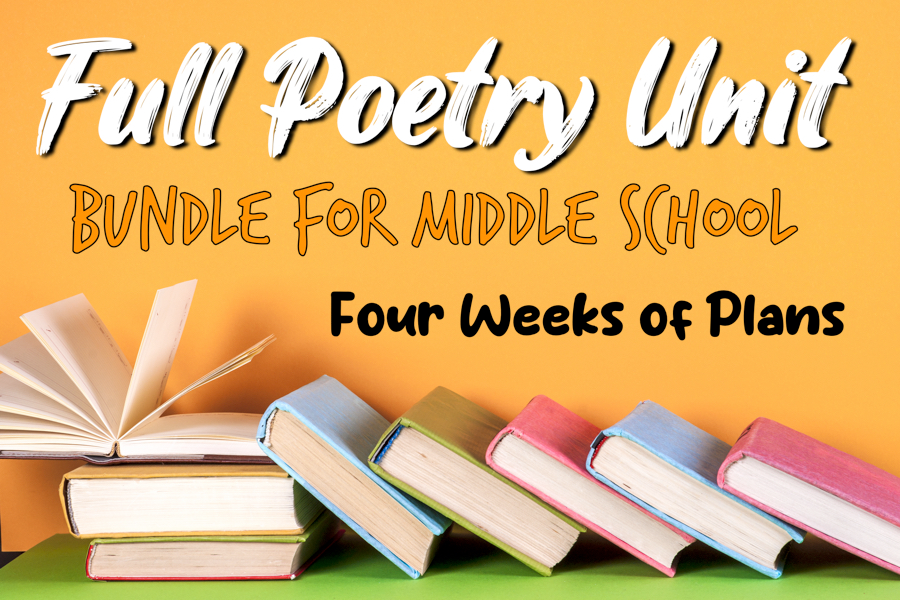
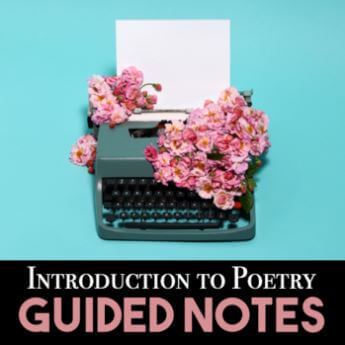
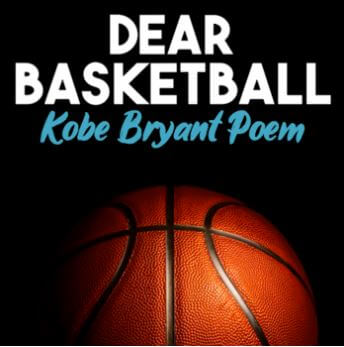
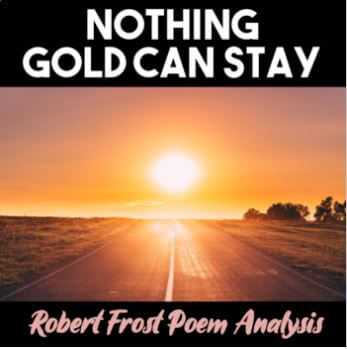
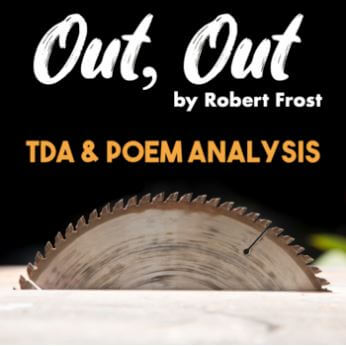
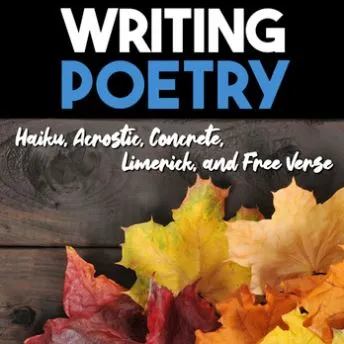

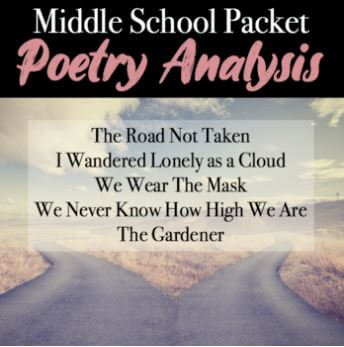
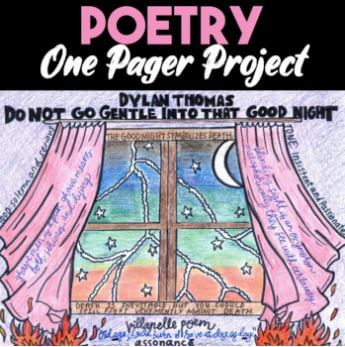
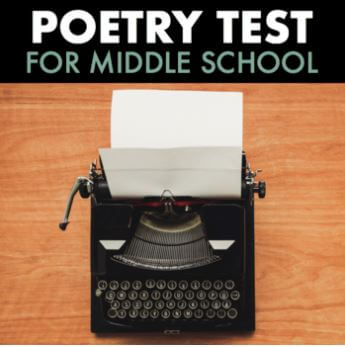
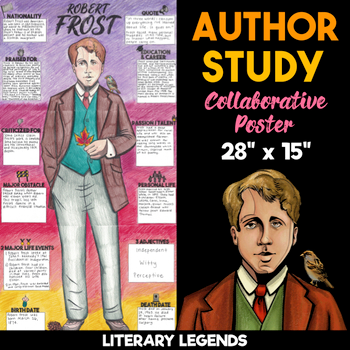

This looks wonderful!